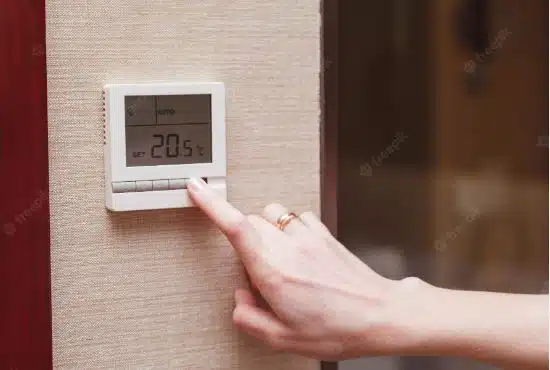Is Upgrading Thermostat Worth It?

There is much debate surrounding whether upgrading your commercial thermostat is worth it. Some people say the benefits are worth the investment, while others argue that there are better ways to save money. Whichever side of the fence you fall on, it’s important to understand what each option offers before deciding. Elite Refrigeration Services can provide expert advice to help you make an informed decision.
Why Upgrade your thermostat?
There are many reasons to upgrade your thermostat, regardless of whether you have a manual or programmable model. Put, you should upgrade your thermostat for the same reasons you would update any other appliance in your business.
If you’re in an area where temperatures vary throughout the year, a thermostat with more settings is a good investment. There are types of commercial thermostat replacements that can handle different temperatures better. Additionally, some models have features like sunrise/sunset schedules that can help reduce your energy usage during peak hours.
As your thermostat ages and wears, its efficiency and accuracy will decrease. A dead zone is the temperature range where your thermostat should activate and adjust but doesn’t. Your HVAC system’s efficiency will be reduced, and you will spend more on heating and cooling.
The Pros and Cons of Upgrading Your Thermostat
Depending on what you’re looking for, there are a few pros and cons to upgrading your thermostat. Upgrading to a more efficient model is a smart move for businesses that want to save money on energy bills. However, if you’re uncomfortable with tampering with your heating and cooling system, there are other options.
Regarding energy efficiency, most newer thermostats operate anywhere from 10-30% more efficiently than older models. This means you’ll use less energy overall and save money on your monthly energy bill. Also, some models have features like automatic temperature control to help maintain an even temperature in the area.
However, there are also some potential downsides to upgrading your thermostat. If you don’t know how to install one yourself, a new thermostat may not be your best solution. However, you can always get a professional to do it for you and save you from all the hassle.
The Different Types of Thermostats
Thermostats come in five common types: non-programmable, programmable, remote control, Wi-Fi, and smart. The thermostats discussed below become more expensive as you move down the list. Each thermostat, however, increases energy efficiency.
Non-Programmable Thermostat
It is easy to adjust the temperature with a non-programmable thermostat. It needs to be manually adjusted whenever you want to change the temperature. But pre-programming it to change the temperature while you are closed isn’t possible.
Programmable Thermostat
It can be programmed to adjust the temperature during the day or at night. On most programmable thermostats, you can set daily and weekly settings. If you’re closed on Mondays, you can set the thermostat to moderate your temperature during those days.
Remote Control Thermostat
A remote-control thermostat is similar to a programmable thermostat but allows you to control the temperature from afar. This type is perfect for people who travel often or live in apartments where they don’t have direct access to the heating and cooling systems. While remotely controlling your temperature is convenient, setting up can also be more challenging. You’ll need to install an approved receiver to use this type of thermostat.
Wi-Fi Thermostat
Wireless thermostats connect to a wireless network. Smartphones, computers, and tablets can all access the network and allow you to adjust the thermostat’s temperature remotely. A wi-fi thermostat is also a programmable thermostat. This type of thermostat is ideal when you want full control over a business temperature setting when it is closed.
Smart Thermostat
For tech-savvy households looking for optimal indoor comfort, smart thermostats are ideal. Using a smart thermostat’s mobile app, you can control it from any device with an internet connection. However, one should also consider that smart thermostats are more expensive than other thermostats.
Using a smart thermostat makes it easy to integrate with various automation tools and devices. With time, your thermostat learns your living habits and adjusts the temperature accordingly. As it notices patterns, it stores that information to maximize heating and cooling efficiency.
How Often Should You Upgrade Your Thermostat?
Upgrading your thermostat can be a cost-effective way to save energy and money on your heating and cooling bills. Here are some factors to consider when deciding whether it’s time to update your thermostat:
How old is the thermostat?
The more a thermostat has been in use, the more it will wear down. Older models typically need to be replaced every 10-15 years.
How much energy does the old thermostat use?
A newer, efficient model will use less energy than an older model. If you have an older home with outdated HVAC equipment, upgrading your thermostat significantly saves your energy bill.
What kind of climate do you live in?
Different types of heating and cooling systems work better in different climates. For example, central air conditioning works best in warm climates, while forced air heating works better in colder climates. If your current thermostat doesn’t adjust its temperature as you change seasons, upgrading to a more efficient model may be a good option.
Conclusion
It’s hard to upgrade your thermostat, especially if you’re not sure it’s worth it. However, you can easily decide whether it’s worth switching by weighing up your options. Upgrading your thermostat’ll save you a lot of money in energy bills, which is worth considering.
Contact Elite Refrigeration Services Today!
Contact Elite Refrigeration Services at 914-222-9173 today for a consultation about your business’s air conditioning and refrigeration needs! We’ll assist you in choosing the best air conditioner or refrigerator for your specific needs based on your business size, insulation, and other features.
We also offer maintenance and repair services to keep your equipment running smoothly. Contact us today to schedule a consultation!


